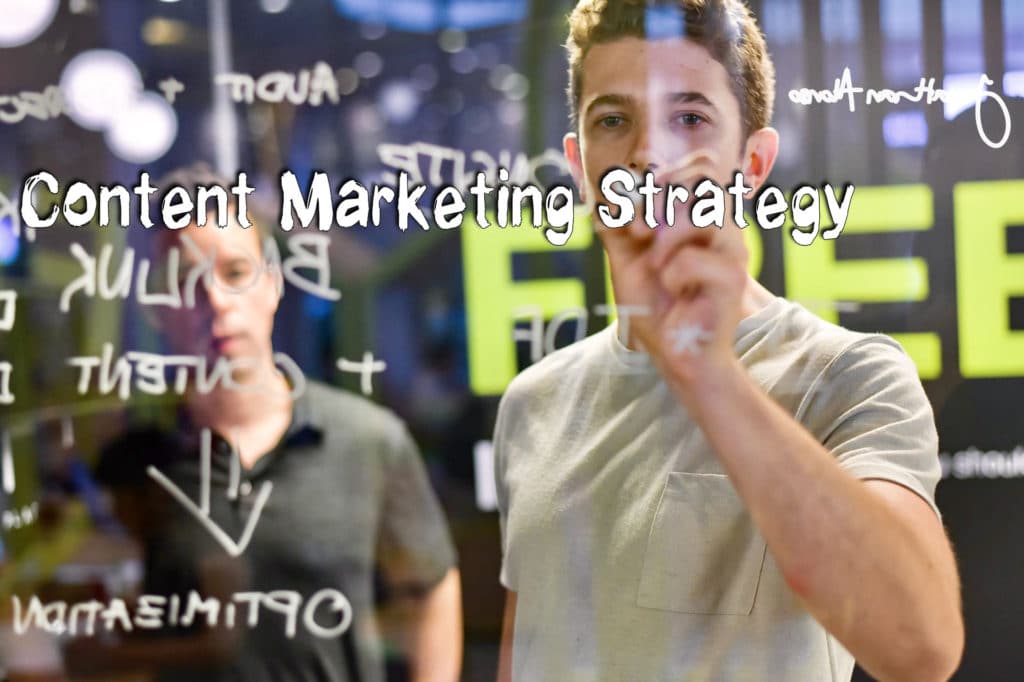Over the years, “content marketing” has been a familiar term, but its significance has significantly increased due to the explosive growth and impact of social media. Notably, renowned figures like Seth Godin have proclaimed it as the future of marketing. In essence, content marketing involves producing and circulating content that appeals to a specific target audience, with the ultimate objective of driving profitability. Presently, content marketing is accessible through various forms and channels, such as white papers, infomercials, videos, and podcasts – even this article serves as content. Nevertheless, while the formats may differ, the underlying principles of content marketing remain the same across industries and objectives.
Mastering Content Marketing: Key Strategies for Creating and Promoting Quality Content
 Content marketing involves more than just creating content. It requires identifying the problems your target audience is facing and providing them with useful information and solutions. The key to producing quality content is understanding what your audience needs and tailoring your strategy to meet those needs. This means conducting thorough research and determining which channels will effectively promote your content. In this article, we’ll explore the essential elements of a successful content marketing strategy and provide actionable tips for creating and promoting content that resonates with your audience.
Content marketing involves more than just creating content. It requires identifying the problems your target audience is facing and providing them with useful information and solutions. The key to producing quality content is understanding what your audience needs and tailoring your strategy to meet those needs. This means conducting thorough research and determining which channels will effectively promote your content. In this article, we’ll explore the essential elements of a successful content marketing strategy and provide actionable tips for creating and promoting content that resonates with your audience.
Content Marketing Strategies
Discover the Two Major Goals of Online Content Marketing for Your Business
Are you looking to solidify your position as an authority in your field and increase your influence on your target audience? Or perhaps you aim to earn the trust of consumers and build a loyal customer base, resulting in consistently high sales? These are the two primary goals of online content marketing. It’s essential to define these goals precisely based on the specifics of your business. Read on to learn how to achieve them and take your business to the next level.
Business Brand & Audience
Business branding is a crucial aspect of marketing that requires a deep understanding of your target audience. It’s important to clearly identify who your target audience is, and what their demographics are. This will allow you to tailor your approach, content style, and format accordingly. For instance, younger audiences tend to prefer informal, easily accessible content that’s highly entertaining. Knowing this, you can select the best distribution channels to reach your audience effectively. By understanding your target audience, you can create a strong brand identity that resonates with them and sets you apart from the competition.
Content Creation
Content creation is a crucial element of online marketing that requires a deep understanding of the target audience. The content should appeal to the interests and needs of the audience while providing real value. It should be engaging, interesting, and optimized for search engines. Instead of directly advertising a product, the content should focus on educating the consumer. By providing valuable insights and knowledge, businesses can establish credibility and build trust with their audience, ultimately leading to increased loyalty and customer retention. A well-crafted content strategy can help businesses stand out from the competition and establish themselves as industry leaders.
Distribution Channels: Key to Successful Online Content Marketing
For businesses, the choice of distribution channels is critical to the success of online content marketing. The ultimate goal is to deliver content in the most effective way possible so that it reaches and resonates with the target audience. Currently, social media platforms are among the most widely used distribution channels. These platforms are designed to promote and share information, giving businesses the best chance for their content to go viral. Websites that the target audience traditionally frequents are also major distribution channels. Email newsletters are another effective way to share content. However, it is important to keep up-to-date with the changing needs of customers and market trends to ensure that the content remains relevant and engaging. By doing so, businesses can make the most out of their online content marketing strategy, stand out from the competition, and increase their reach.
Content Focus
Choose Your Platforms
When it comes to content marketing, choosing the right platforms is crucial to ensure maximum reach and engagement with your target audience. However, it’s not just about selecting popular platforms for your content type. It’s essential to understand your audience’s preferences and behavior to choose the most effective platforms for your brand.
For example, if your target audience comprises visual learners, platforms like Instagram, Pinterest, and YouTube may work best for you. If you’re targeting professionals, LinkedIn and SlideShare may be the right choice for sharing industry-specific content.
Moreover, it’s not just about playing it safe with the most popular platforms. You need to experiment with new platforms and features that align with your content and audience. For instance, TikTok may seem like an unconventional platform, but it may work wonders for creative and entertaining content.
In conclusion, don’t just stick to what you know works. Keep an eye on emerging platforms and trends, experiment with different platforms, and analyze your results to optimize your content marketing strategy continually.
Choose Your Content
Choosing the right platforms for content marketing is crucial for maximum reach and engagement with the target audience. It’s important to understand the audience’s preferences and behavior to select the most effective platforms for the brand. Experimenting with new platforms and features that align with the content and audience is also essential. Businesses should keep an eye on emerging platforms and trends, analyze their results, and optimize their content marketing strategy continually.
Once you have determined the platforms to use, it’s important to tailor your content to fit each platform. For instance, Facebook is great for sharing articles via links or short bursts of content with an image. YouTube requires engaging videos, how-to resources, or information pieces that people will find interesting. Tumblr, on the other hand, is perfect for piecing together a PowerPoint presentation that people will find useful and shareable. By creating content that fits each platform, you’re more likely to reach and engage your audience effectively.
Choose Your Times
As a content marketer, it’s important to choose your time wisely. This means having an editorial calendar to organize which content will be published where and at what time. Rather than randomly posting content, it’s a good idea to organize it in a way that flows and has a theme or direction at the end of the month.
However, it’s essential to avoid posting too frequently on each platform. Doing so may cause your audience to become overwhelmed and unfollow you. It’s important to leave them wanting more, not wishing they didn’t hear from you again. Consider the platform and the audience’s behavior to determine the optimal frequency for posting.
It’s also crucial to experiment with new platforms and features to see what works best for your brand. Keep an eye on emerging trends and platforms, analyze the results, and continually optimize your content marketing strategy. By creating content that fits each platform, businesses can reach and engage their audience effectively.
Schedule & Publish
Scheduling and publishing content is an essential part of any successful content marketing strategy. By using various tools to automate the process, you can save time and effort while ensuring that your content is reaching your target audience at the most optimal times.
One of the most popular tools for scheduling and publishing content is Sendible. However, there are many other options available, including Hootsuite, Buffer, and Sprout Social. These tools allow you to input your content, select the platform(s) you want to publish on and choose a date and time for your content to go live.
But scheduling and publishing content aren’t just about saving time. It’s also about maximizing engagement and reach. By analyzing your audience’s behavior and preferences, you can determine the best times and platforms to publish your content for maximum impact.
It’s also important to have an editorial calendar in place to ensure that your content is organized and aligned with your overall marketing goals. This will help you avoid over-posting on any one platform while ensuring that you are consistently providing valuable content to your audience.
In addition, you should always be experimenting with new platforms and features to stay ahead of the competition. By analyzing the results of your campaigns and continually optimizing your strategy, you can increase your reach, cultivate a loyal customer base, and ultimately drive more conversions.
In short, scheduling and publishing content is a crucial part of any successful content marketing strategy. By using the right tools, understanding your audience’s preferences, and continually optimizing your approach, you can achieve greater engagement, reach, and ultimately, business success.
Monitor Progress
Monitoring progress is a critical aspect of any content marketing strategy. Once you have scheduled your content, it’s important to track its performance and engage with your audience. By actively managing your community and responding to comments, you can create a lively discussion around your content. This can help increase its popularity, reach, and exposure for your business, leading to more sales.
Additionally, social media engagement can also impact your SEO efforts. Google considers social signals such as likes, shares, and comments when ranking websites. Therefore, the more engagement your content receives on social media, the higher it will rank on search engines.
To monitor progress, use analytics tools to track engagement metrics such as likes, comments, and shares. Analyze the data and adjust your content and posting strategy accordingly. By continually optimizing your approach and experimenting with new platforms and features, you can increase your reach, engagement, and ultimately drive more conversions.
Content Promotion
Content promotion is an essential part of any successful content marketing strategy. With millions of new messages being posted on the internet every day, it’s difficult to stand out and attract the attention of readers. Creating quality content is important, but it’s not enough. You must use effective promotion techniques to ensure that your content reaches your target audience.
 o begin with, it’s important to understand your audience’s preferences and behavior to select the most effective platforms for your brand. Experimenting with new platforms and features is also essential. Once you have scheduled your content, actively managing your community and responding to comments can create a lively discussion around your content, leading to more sales and higher rankings on search engines.
o begin with, it’s important to understand your audience’s preferences and behavior to select the most effective platforms for your brand. Experimenting with new platforms and features is also essential. Once you have scheduled your content, actively managing your community and responding to comments can create a lively discussion around your content, leading to more sales and higher rankings on search engines.
Social media is a great platform for promoting your content. Share your content on your social media accounts and engage with your followers to increase visibility. Collaborating with influencers and other brands can also help expand your reach.
Email marketing is another effective promotion technique. Send newsletters to your subscribers with links to your latest content. You can also segment your email list to target specific groups of subscribers with content that’s relevant to their interests.
Paid advertising such as Google Ads or social media ads can also help increase your content’s visibility. However, it’s important to set a budget and target your ads to the right audience to avoid wasting resources.
In conclusion, content promotion is crucial for the success of your content marketing strategy. Use a combination of techniques such as social media, email marketing, collaborations, and paid advertising to reach your target audience and increase engagement. Continually optimize your approach and analyze data to drive more conversions and achieve your marketing goals.
Make Content Easy To Share And Structured In A Transparent Way
To maximize the reach of your content, it’s essential to make it easy to share and structure in a transparent way. The first step is to ensure that your content is simple and easy to consume. This means using language that is accessible and avoiding complex jargon or technical terms.
Additionally, structuring your content in a way that is easy to navigate can also help increase its shareability. Blog articles that are broken up into sections with clear headings and subheadings are easier to read and share. Infographics and “Comment” articles are also popular types of content that tend to attract social sharing.
The length of your content also plays a role in its shareability. Longer content of at least 2,000 words has been shown to rank higher in Google search results and attract more shares. However, it’s important to note that the content should be engaging and valuable to the reader.
Crafting a powerful and targeted title can also increase the likelihood of social sharing. Your title should capture the reader’s attention and accurately reflect the content of the article.
To make it easy for readers to share your content on social media, including social media sharing widgets for platforms such as Facebook, Twitter, and Instagram. These widgets should be prominently displayed under the title or at the end of the article.
In summary, making your content simple, easy to navigate, and shareable is crucial for maximizing its reach and engagement. By structuring your content in a transparent way and promoting it through social media and other channels, you can attract more readers and achieve your marketing goals.
Make Sure Your Social Media Posts Are Highly Involved
Crafting highly engaging social media posts can be a game-changer for your content marketing strategy. With millions of users scrolling through various social media platforms every day, it is important to create posts that stand out and grab their attention. When sharing your content on social media, focus on maximizing engagement by incorporating elements such as comments, likes, shares, and bookmarks.
The length of your message plays a significant role in determining engagement levels. Each social media platform has a specific character limit for posts, so it’s important to adjust your message length accordingly. Hashtags are also a crucial component of social media vocabulary. They can boost the visibility of your content and increase engagement, especially on platforms like Facebook, Twitter, and Instagram. Using 1-2 relevant hashtags can help your post reach a wider audience.
Another way to make your social media posts more engaging is by including appropriate images or videos. Visual content has a huge impact on social media and can increase the likelihood of your post being shared or liked. Additionally, consider experimenting with different forms of content like infographics, memes, or animations to keep your followers interested and engaged.
To ensure your social media posts are highly involved, consider the following tips:
- Use the appropriate length for each platform.
- Include relevant hashtags to increase visibility.
- Incorporate visual content to enhance engagement.
- Experiment with different types of content to keep followers interested.
- Engage with your audience by responding to comments and messages.
By following these tips, you can create social media posts that are highly involved and increase engagement, reach, and ultimately drive more conversions.
Advertising on Facebook
Facebook is a powerful platform for promoting your publication and attracting more readers. With over 2.7 billion monthly active users, it’s the largest social media network in the world. Advertising on Facebook can help you tap into this massive audience and drive more traffic to your publication.
When you advertise on Facebook, you can create targeted ads that are shown to users based on their interests, demographics, and behaviors. This means that you can reach the people who are most likely to be interested in your publication, increasing the chances of them clicking on your ad and visiting your website.
Facebook ads are also highly customizable, allowing you to choose the ad format, placement, and budget that works best for your goals. You can create ads that appear in users’ news feeds, in the right-hand column, or as sponsored posts in groups or events. You can also set a daily or lifetime budget for your ads, and choose whether to pay for clicks, impressions, or conversions.
To create a successful Facebook ad campaign, it’s important to have a clear goal in mind and a well-defined target audience. You should also create compelling ad copy and use eye-catching visuals to grab users’ attention. Experimenting with different ad formats and placements can also help you find what works best for your audience.
In addition to advertising, there are other ways to promote your content on Facebook. You can share links to your publications on your Facebook page and in relevant groups, and encourage your followers to share and engage with your posts. You can also use Facebook’s built-in analytics tools to monitor your progress and adjust your strategy as needed.
Overall, advertising on Facebook can be a highly effective way to promote your publication and attract more readers. By creating targeted ads, using compelling visuals and copy, and experimenting with different ad formats, you can reach a wider audience and achieve your marketing goals.
Content Marketing Conclusion
In conclusion, the landscape of content marketing has evolved drastically over the years. It’s no longer enough to just publish any content with a few links and expect to generate traffic. Search engines like Google are becoming stricter on such practices, and audiences are becoming more discerning. To succeed in content marketing, it’s crucial to focus on publishing high-quality content across various platforms, keeping your audience engaged, and maintaining a constant presence.
By consistently creating and publishing valuable content, you can build a loyal following and establish your brand as an authority in your industry. This will not only ensure that you’re not caught off guard by Google’s algorithm changes, but it will also help you gain exposure and achieve continuous growth and success for your business.
Moreover, it’s not just about creating content but also about monitoring its progress and promoting it effectively. You need to engage with your audience, respond to comments, and create discussions around your content to increase engagement and reach. Utilizing social media, email marketing, collaborations, and paid advertising can also be effective ways to promote your content and attract more readers.
Finally, it’s important to make your content easy to share by structuring it transparently, using powerful titles, and including social media sharing widgets. Creating highly engaging social media posts with relevant hashtags, visual content, and audience engagement can also help to increase your reach and drive conversions.
By following these tips and continually optimizing your approach, you can achieve success in content marketing and build a strong online presence for your business.








